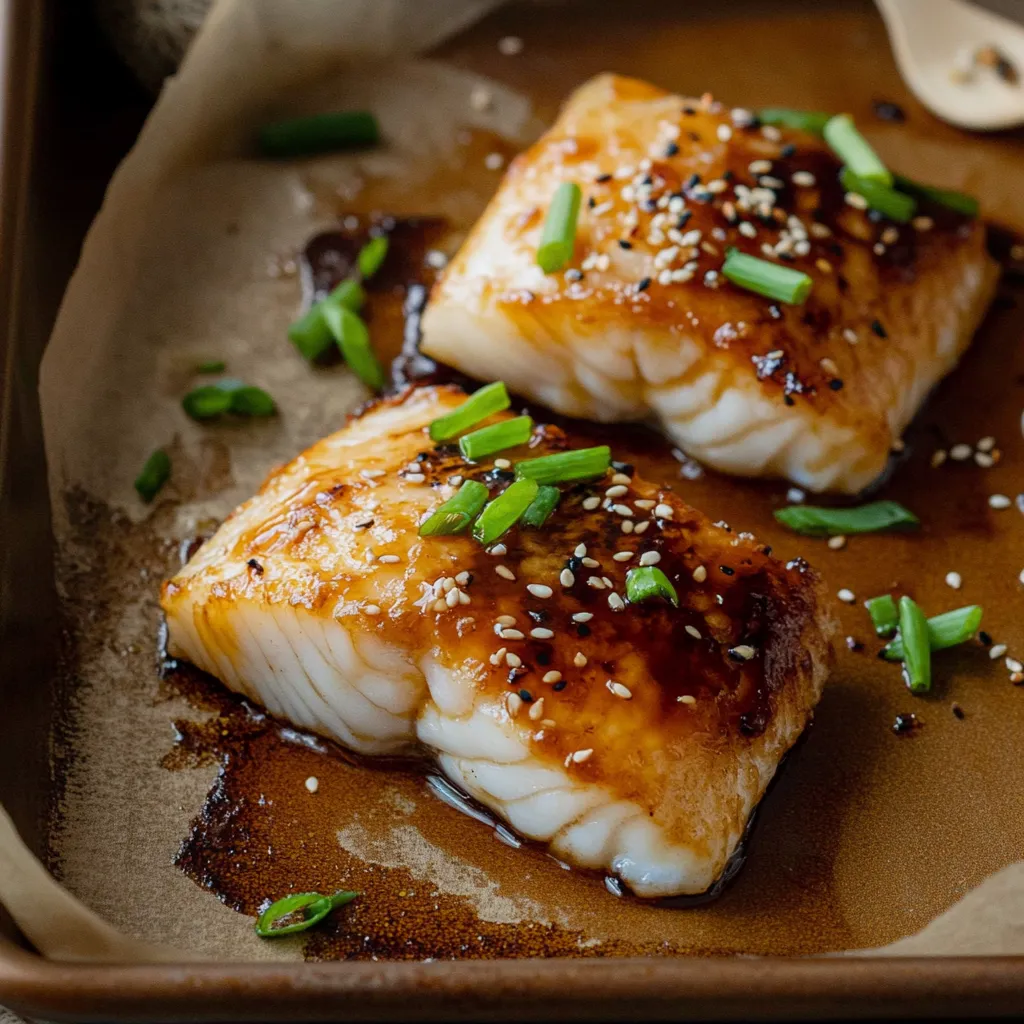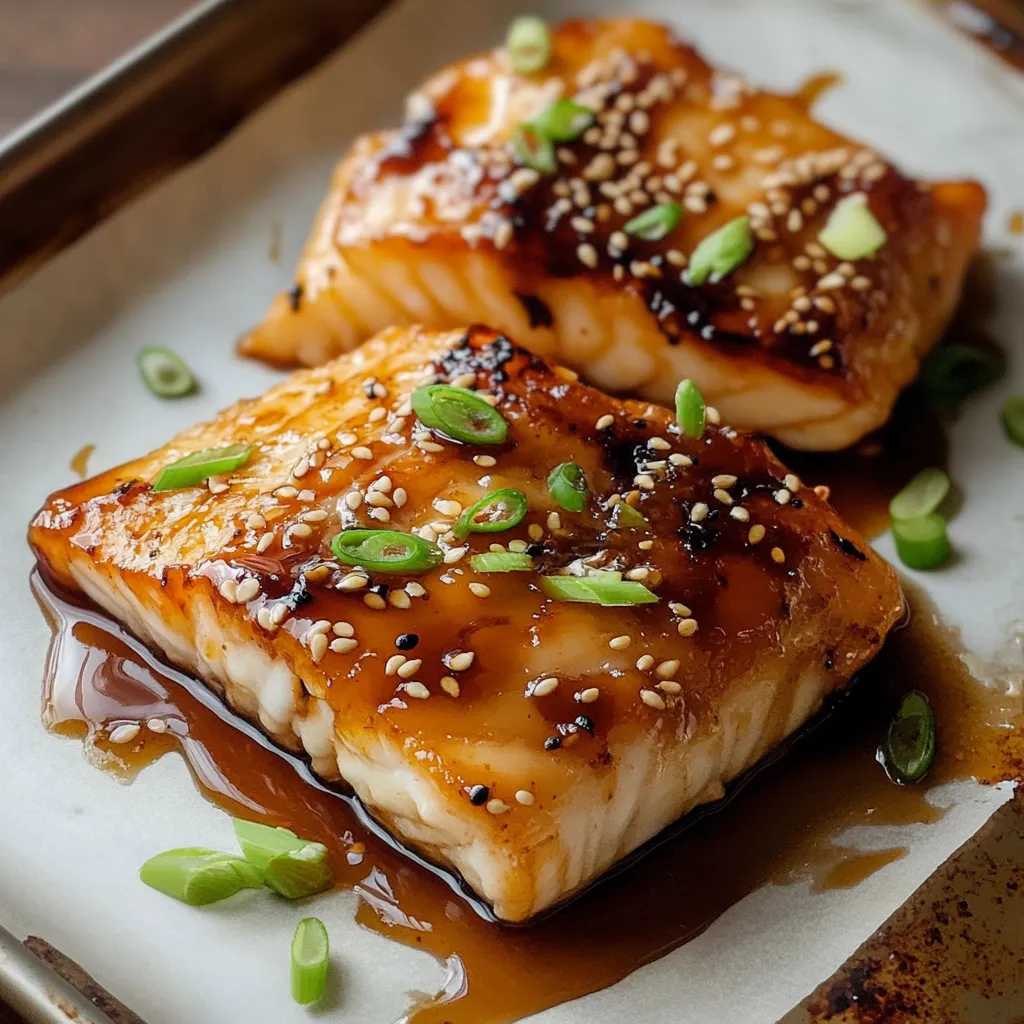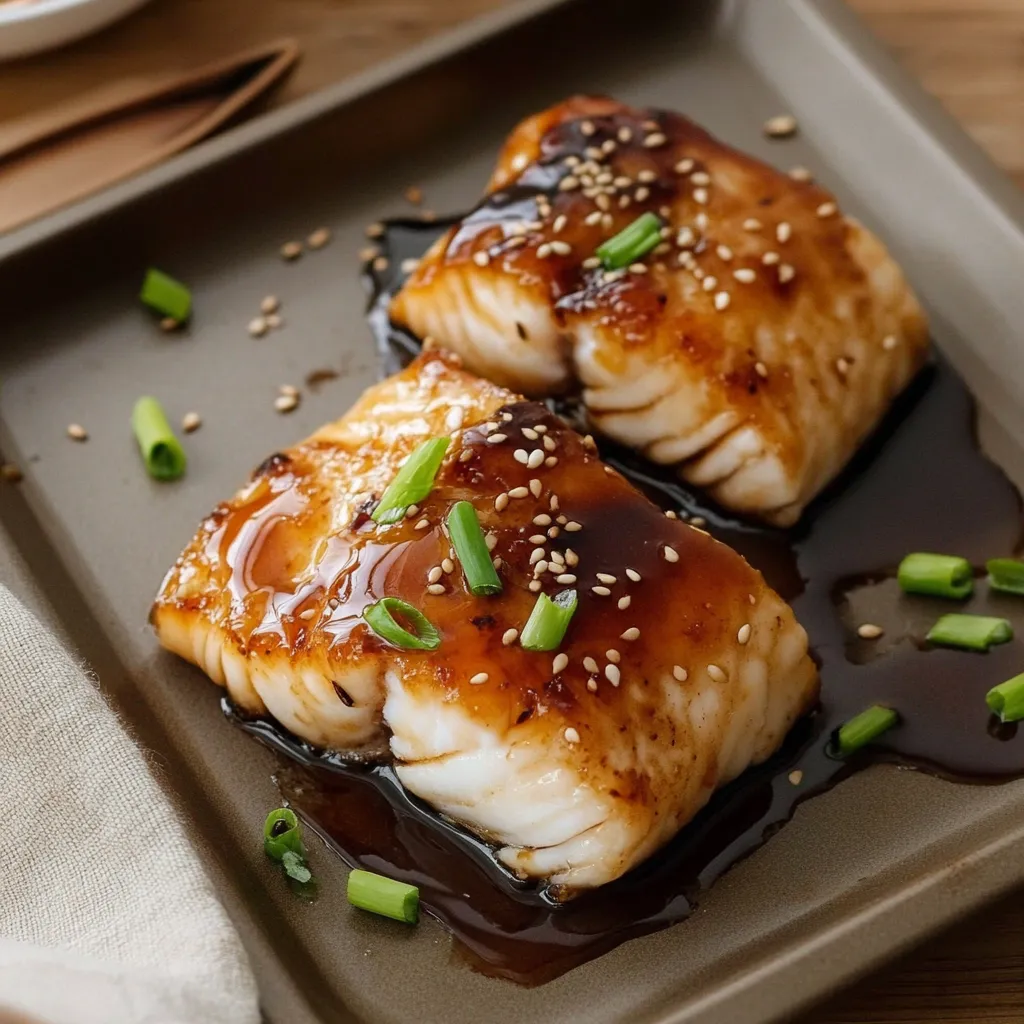 Pin it
Pin it
The combo of honey and soy sauce makes a mouthwatering coating that turns ordinary cod into something you'd expect at a fancy restaurant. This dish brings together sweet honey, rich soy, and zesty ginger for a perfect balance - creating a tasty outer layer while keeping the fish juicy inside. You don't need fancy cooking skills or weird ingredients to make this Asian-inspired meal that'll upgrade your weeknight dinner.
I made this glazed cod for my family gathering just days ago, and my nephew, who usually runs from seafood, asked for more! The familiar tastes made it easy to enjoy while still feeling special enough for our celebration.
Key Ingredients and Selection Tips
- Cod Fillets: Go for thick, solid pieces that look slightly clear and don't smell fishy. When you press them, they should bounce back. Wild Pacific cod tastes best, but good farm-raised options work fine too
- Honey: Pick real, unfiltered honey for better flavor. Local types often add subtle flowery hints that make the dish even tastier
- Soy Sauce: High-quality Japanese or Korean brands give deeper flavor than regular ones. Light soy works best so it won't overpower the fish
- Fresh Ginger: Look for firm pieces with smooth skin. Younger ginger has a milder, more fragrant taste that's perfect here
- Sesame Oil: Get toasted sesame oil for the most authentic taste. It should be dark amber and smell strongly nutty
- Rice Vinegar: Use plain, unseasoned rice vinegar so you can control the overall taste better
Step-by-Step Cooking Guide
- First: Glaze Preparation
- Get all your stuff ready and mix soy sauce, honey, and sesame oil in a small bowl. It should be thick enough to stick to the back of a spoon. Grate ginger right into the mix to catch all its oils. Stir everything until the honey completely blends with the other ingredients.
- Second: Fish Preparation
- Completely dry your cod with paper towels so the glaze sticks well. Check for any bones and pull them out with tweezers. Let the fish sit at room temp for 15 minutes while you get everything else ready.
- Third: Initial Glazing and Marination
- Brush the glaze all over each piece of fish. Put them in a glass dish with space between each fillet. Cover and chill for 30 minutes to 2 hours - this lets flavors sink in without making the delicate fish mushy.
- Fourth: Broiler Setup and Cooking
- Move your oven rack 6 inches from the broiler for perfect browning. Put parchment on a baking sheet and lightly oil it so nothing sticks. Arrange fish with thicker parts toward the outside of the pan where it's hotter.
- Fifth: Glazing and Cooking Process
- Start broiling on low, adding more glaze every 2-3 minutes. This repeated glazing builds up flavor and creates a shiny finish. Look for gentle bubbling around the edges - that shows it's cooking at the right temp.
 Pin it
Pin it
Smart Timing and Heat Management
Getting to know your broiler is super important for this dish. Every oven heats differently, so watch what's happening. The fish should gently sizzle but not smoke, and the glaze should brown slowly. Aim for an inside temp of 135°F for medium doneness, which keeps it moist and flaky.
What to Look For While Cooking
As your cod cooks, you'll see the flesh turning from clear to white from bottom to top. The top will turn a beautiful golden-brown as the honey caramelizes. When you notice tiny bubbles forming in the fish, that means its natural oils are coming out - a good sign it's cooking properly.
Prep Ahead and Storing Leftovers
You can make the glaze up to three days early and keep it in a sealed container in your fridge. Just warm it up a bit before using so it's the right thickness. Any leftover fish will stay good for about two days if you store it right in the refrigerator.
Changing It Up With the Seasons
In summer, try adding fresh Thai basil or cilantro to your glaze. Winter versions taste great with warm spices like star anise or cinnamon. Spring calls for bright additions like fresh lemon zest, while fall is perfect for swapping honey with maple syrup for deeper flavor.
Fixing Common Problems
If your glaze starts browning too fast, cover the fish loosely with foil to stop it from burning while it finishes cooking. Thicker fish pieces need more time at lower heat. If your fish is releasing too much water, spend extra time drying it before adding the glaze.
My family really loves the ginger in this dish. I started growing ginger at home a few weeks ago, and wow, using just-picked ginger makes such a difference! The warm, aromatic kick it gives the glaze has become what everyone remembers about this dish at our house.
This has become my favorite way to cook cod, turning an often forgotten fish into something really special. Building flavor by glazing multiple times creates depth but still lets the cod's natural sweetness shine through. Whether I'm making a quick dinner on a busy night or hosting friends, this recipe always turns out great without much fuss.
 Pin it
Pin it
Frequently Asked Questions
- → Will other fish work for this?
- Absolutely, try halibut, sea bass, haddock, black cod, lingcod, or rockfish instead of cod.
- → How can I tell if the fish is ready?
- When the center reaches around 135-140°F and it flakes with minimal effort, it’s good to go.
- → Can the glaze be made early?
- Sure, prep the glaze up to a couple of days in advance and stick it in the fridge.
- → What’s a swap for honey?
- Brown sugar or maple syrup works just fine if you run out of honey.
- → What works well as sides?
- Pair with fluffy steamed rice, stir-fried greens, or a fresh Asian-inspired slaw.
